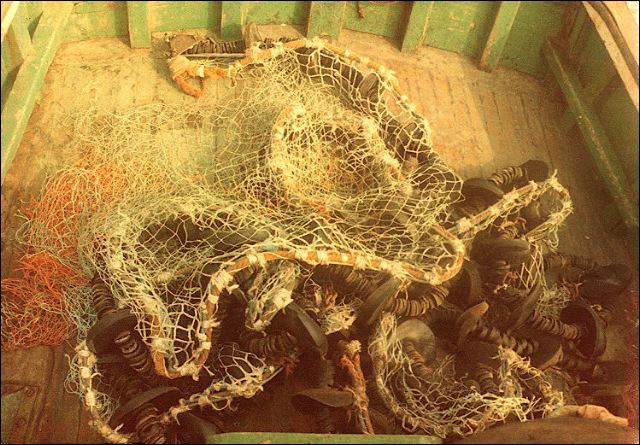Every day, somewhere out at sea the chances are a trawler or beam trawler will find itself in the same position as the scalloper Guiding Light III - her scallop dredges hitched tight or 'come fast' on an obstruction on the seabed.
Even in the relatively calm conditions - a mile off the beach in Torbay - there is a danger that the boat can be capsized with all the weight bearing on one side of the boat. While the skipper and crew attempt to free the starboard side gear from the obstruction - in this instance possibly a heavy wire cable - the boat is held over, the angle increasing - and the danger of capsize - every time the skipper puts the winch in gear and heaves the dredges higher to allow more of the obstruction to be cut away by oxyacetylene torch.
When the weight is finally cut away (7:40) the boat immediately rights herself - only for more of the obstruction still entangled and needing to be cut away before the boat can head safely back to harbour.
At that time the shipping forecast for Dover, Wight, Portland and Plymouth was southwesterly gale force 8 increasing severe gale force 9. A small boat like the Guiding Light III attempting this manoeuvre in Mount's Bay in the same forecast would have had the danger magnified hugely as there would have been a considerable ground sea (swell) causing the boat to rise and fall up to 2 metres or more. In such conditions, the skipper would have to balance the very unpredictable rise and fall caused by the swell with the amount he could haul up the gear - the tactic is to use the swell to help release the gear if possible.
The outcome to this kind of incident at best results in retrieving the gear with little or no damage - just a lot of consternation and lost fishing time, at worst it results in the loss of the boat and crew - as was likely in the case of the loss of the Margaretha Maria off the Lizard.
 |
| After 18 hours working to free the trawl, missing was the entire trawl net, one bridle and one trawl door. |
In deeper water, twenty miles off the shore things can take much longer as it is only safe to haul the gear up tight to the boat during slack water (either high or low tide) as the tide pushes the boat at up to 3 knots making it impossible to heave directly over the top of the obstruction. To free the obstruction took four hours in the video - this photo was all that was left of the trawl aboard the Newlyn trawler Keriolet when she battled for 18 hours with the trawl in a wreck off Pendeen.
Video courtesy of TelsWeb Brixham.